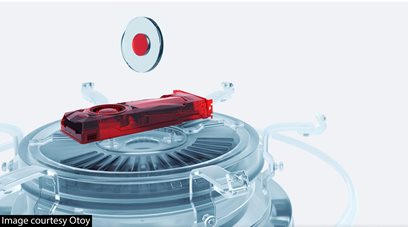04 February. 2022

Etherium tokens are all the rage, especially those that power the recent NFT craze. Not all of them serve a useful (or justifiable) purpose but one of them might become a useful tool for 3D artists and digital studios. RenderToken (RNDR) is a distributed GPU rendering network built on top of the Ethereum blockchain. It connects artists and studios in need of GPU compute power with mining partners willing to rent their GPU capabilities out. By no means a newcomer, RNDR was conceived in 2009 by OTOY, Inc., the definitive cloud graphics LA company with Academy Award®-winning technology which is used by leading visual effects studios, artists, animators, designers, and architects to achieve what is called in the industry ‘new levels of realism’. comes new economics in content creation and distribution powered by the cloud.
It is worth it to look at the token and the distributed graphics processing protocol closer. As a medium of exchange, RNDR network allows to connect users who wish to render images and videos with those who have idle processing power. The technology behind it is a sort of decentralised system that tracks and manages render jobs, which offers a better use of GPU powers in the crypto sector. A large amount of GPU power today is used in ‘proof-of-work’ mining, which is a highly inefficient, expensive and very resource-intensive way of solving arbitrary arithmetic functions to power crypto networks. The designers of RNDR envisage a better future for the computational power of GPUs to harness the work that GPUs are designed to do - create 3D graphics, which the artists can store and access using the ledge-based storage protocol.
Connected 3D assets are one of the (potential) future sectors of decentralised economy. The technology is developed for the immersive and multimedia technologies and the sectors identified by the developers are as expected: Media, Entertainment, AR, MR, VR, Gaming and Healthcare. The process of rendering reality has already raised to the unprecedented levels in the industry; now it is time for rendering ecosystem innovations and RNDR is well placed to become one of the pioneering technologies of the future.
RNDR protocol can handle digital rights management, complex transactions governed by smart contracts, securely protected property rights. The protocol can also handle physically correct rendering tasks in a cloud-based, blockchain peer-to-peer network with no error or delay. And the most attractive feature of RNDR is that developers using it can directly monetise their idle GPU power by performing renders in exchange for RNDR tokens which are now traded on several crypto exchanges including highly respectable Coinbase and can be instantly converted into crypto or fiat currency.
NB: This piece is on the distributed systems innovation and is not intended to be an investment advice. Anyone who decides to buy RNDR tokens after reading - you are doing it at your own risk.